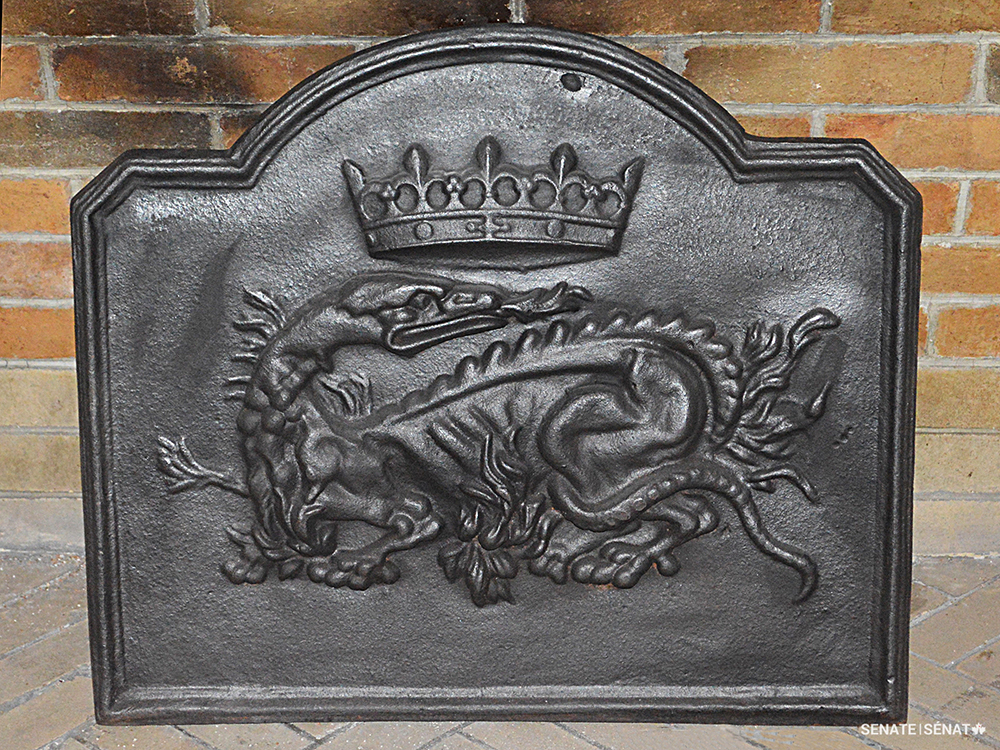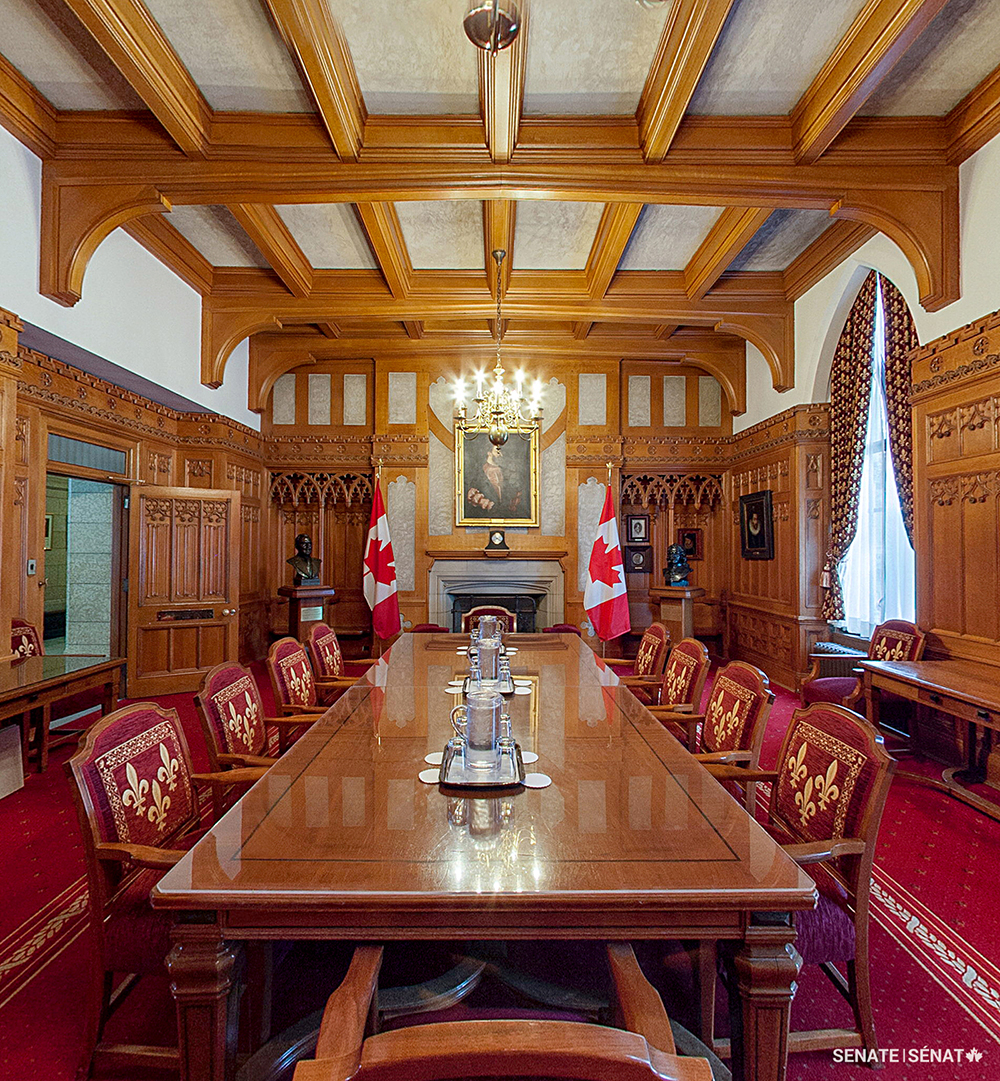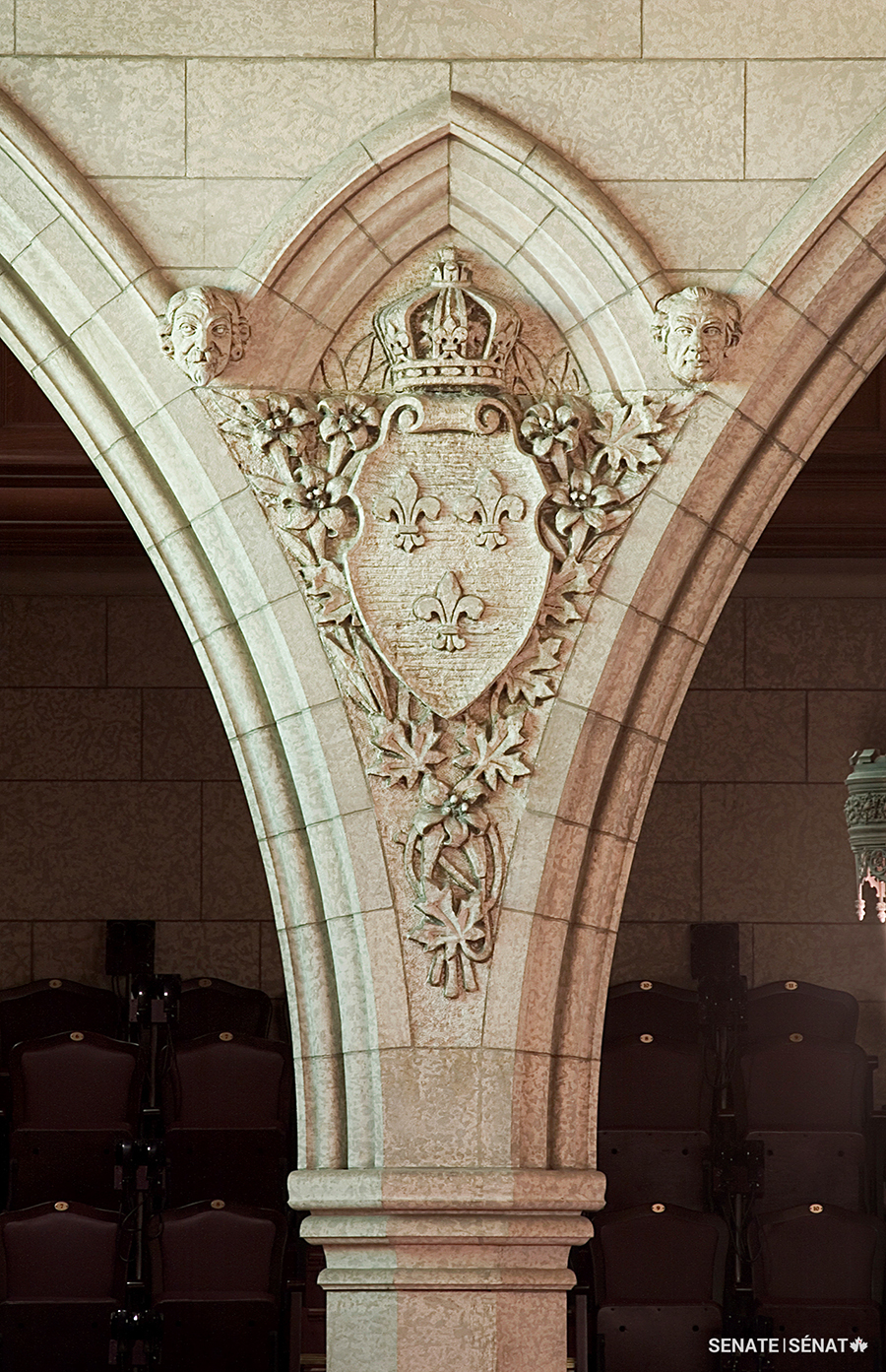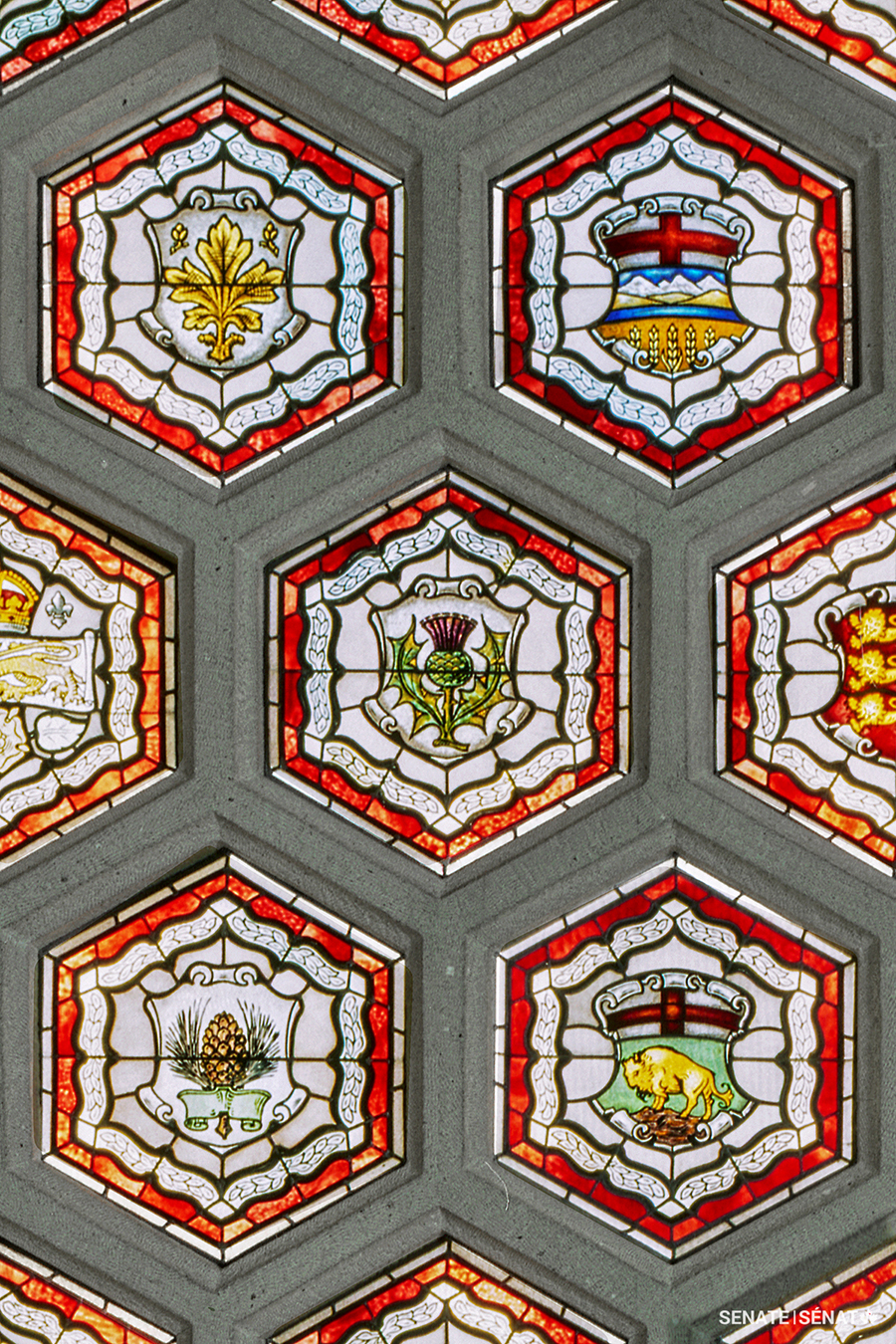The fleur-de-lis, the salamander and the thistle: Parliament’s royal symbols, part three
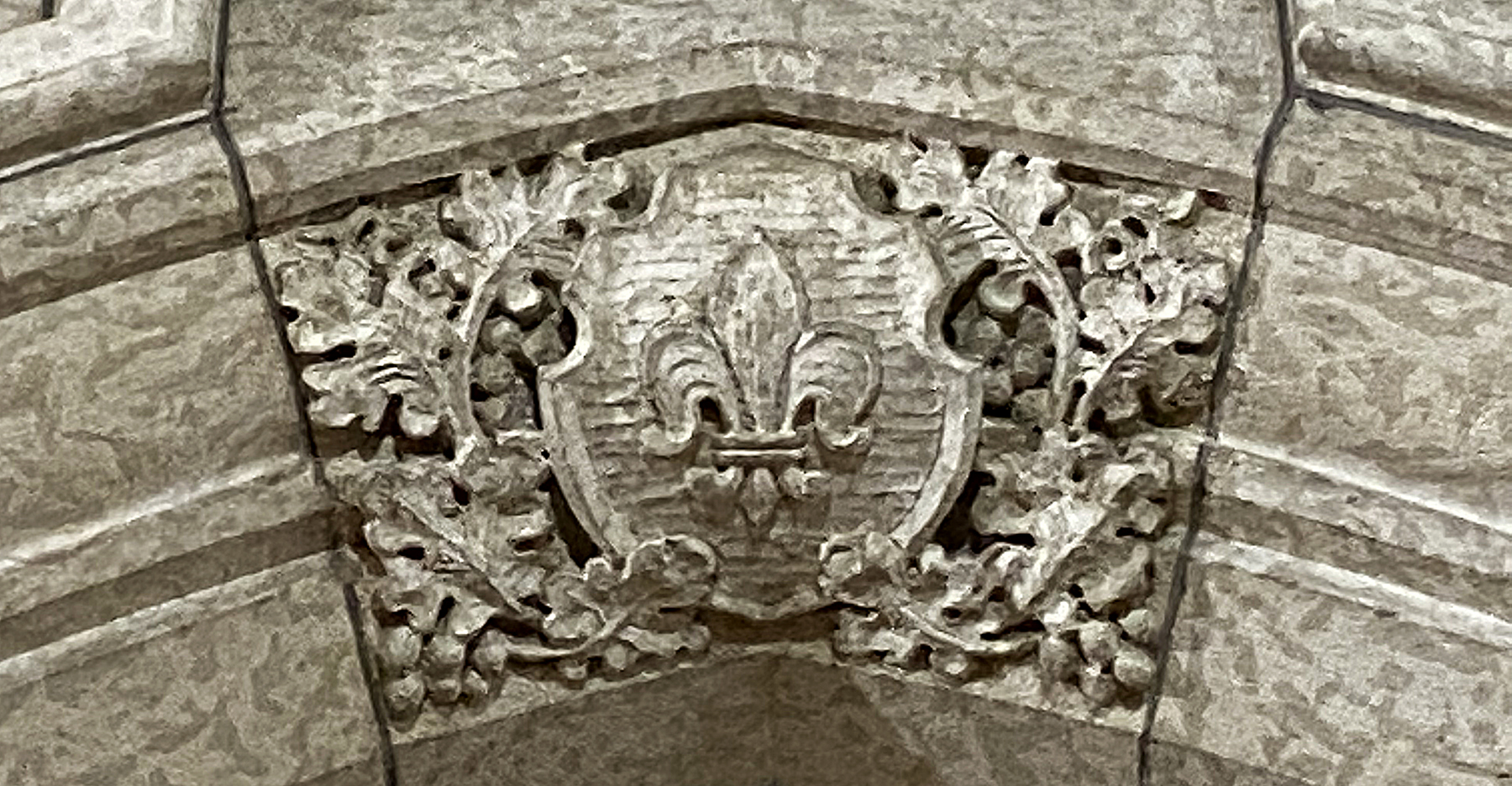
In the last of a series of three articles, we explore three of the most frequently seen royal symbols in the Parliamentary Precinct.
In February 2019, the Senate moved to the Senate of Canada Building, a former train station built in 1912. The Senate will occupy this temporary location while Parliament’s Centre Block — the Senate’s permanent home — is rehabilitated.
Although Centre Block is shuttered for rehabilitation work, Canadians can still experience its art and architecture — as well as the Senate of Canada Building’s — through the Senate’s immersive virtual tours.
The story of Canada’s Parliament starts in the Early Middle Ages with the great councils that advised England’s and France’s earliest kings.
These hand-picked assemblies — Anglo-Saxon England’s Witan and France’s Conseil du Roi — evolved into the earliest parliaments. They began to assert themselves in the 1200s, convening in defiance of the king and insisting the monarch be accountable to his people.
If you look closely enough, you will see this thousand-year-old epic depicted on the walls of the Parliament buildings. Hundreds of royal symbols scattered through the buildings recount the story of how these medieval institutions became the robust parliaments of Canada, France and Great Britain today.
“We display these symbols, and we enact age-old parliamentary rituals as a way to show that we are connected to this thing that is bigger than all of us,” House of Commons curator Johanna Mizgala said. “We play a role in it, and we change it, hopefully, but it has a history that we constantly have to breathe new life into.”
Here are a few symbols to look out for:
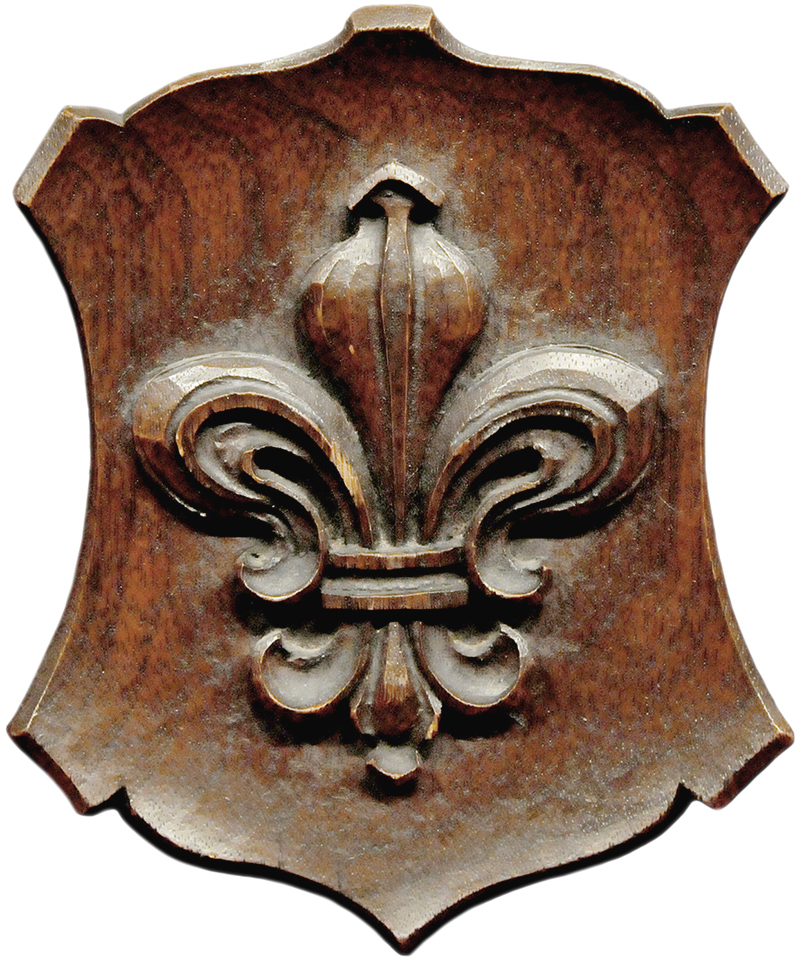
Fleur-de-lis
The fleur-de-lis is a widely used heraldic emblem particularly associated with France. It appears all over Parliament Hill as a symbol of the 230 years France governed what would become Canada.
“The fleur-de-lis has properties related to purity and strength,” Ms. Mizgala said. “In mythology, the notion is that this flower was handed to people who were destined to do great things — and it would never wilt.”
Its royal connection goes back to Clovis, a sixth-century pagan ruler who founded France’s first royal dynasty. Legend has it that Clovis rode to war bearing a shield with his ancestral insignia — three frogs on a blue field. On the eve of battle, the emblem miraculously transformed into lilies on a blue field and Clovis prevailed.
His wife, Clotilde, offered this interpretation — the three flowers represented the Holy Trinity; Clovis had the Christian god to thank for his victory. He converted, with the fleur-de-lis signifying his divine right to rule.
Louis VI adopted the emblem in the 1100s. For centuries, the French royal coat of arms remained a blue shield scattered with dozens of yellow fleurs-de-lis. In 1376, Charles V simplified the design to three.
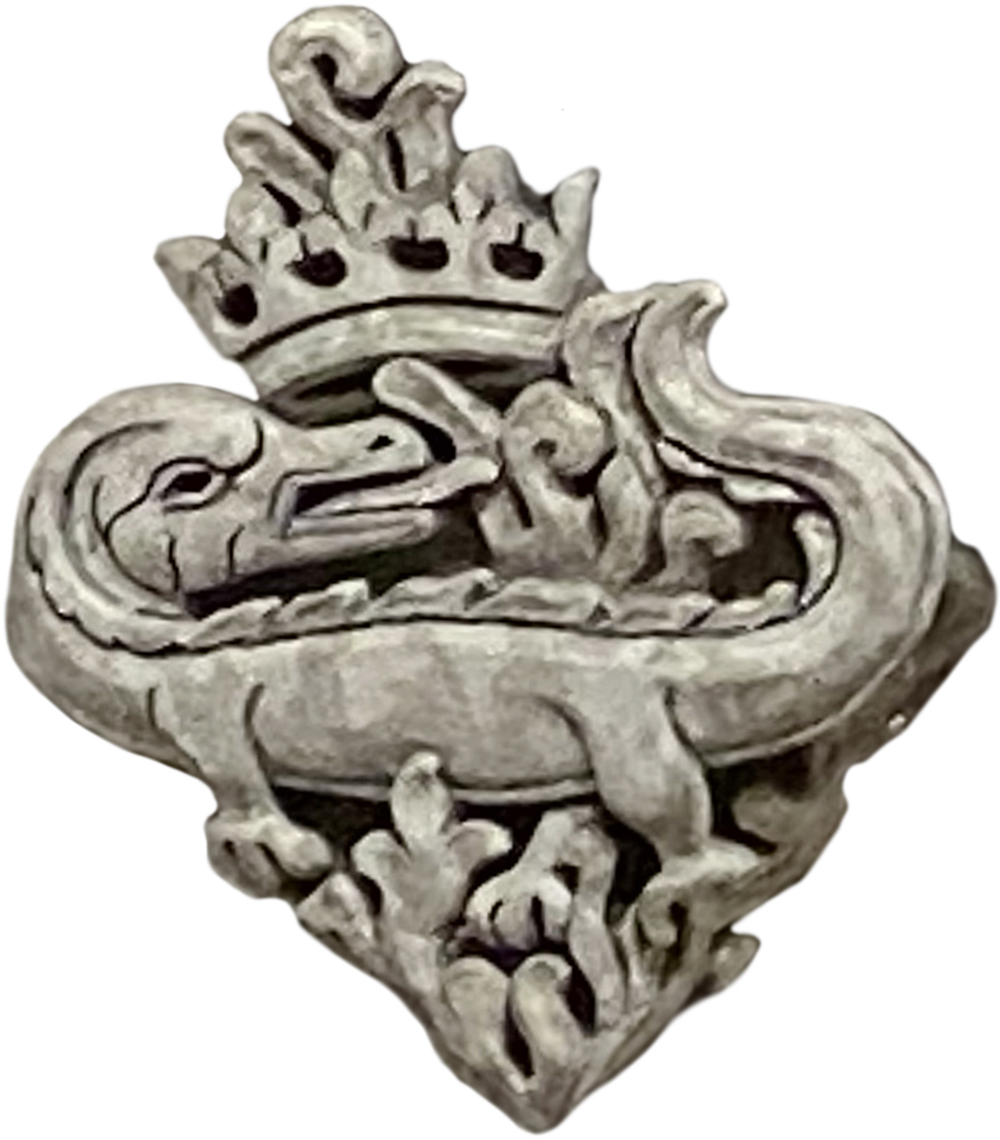
Salamander
Shy, slimy and defenceless, your garden-variety salamander may seem unremarkable. In heraldry, it’s another story.
The lowly amphibian earned an illustrious place in medieval bestiaries as a semi-divine creature with the magical power to withstand fire. This belief likely stemmed from the tendency of some species to hibernate in rotting logs. Medieval peasants, warming themselves with firewood foraged from the forest floor, would be astonished to see salamanders scurrying out of the flames. Because their moist skin provided temporary protection, the creatures could escape unscathed.
“The salamander is connected to rebirth and surviving fire,” Ms. Mizgala said. “It has particular significance for our own Parliament building as a reminder of the devastating 1916 fire.”
François I, the sixteenth-century French king credited with bringing the Italian Renaissance to France, seized on this potent symbolism and adopted the salamander as his emblem, accompanied by the Latin motto, Nutrisco et extinguo (I nourish, and I extinguish).
François has a special connection to Parliament Hill. He launched France’s exploration of the New World and was the first ruler of New France, the seed of what would become Canada.
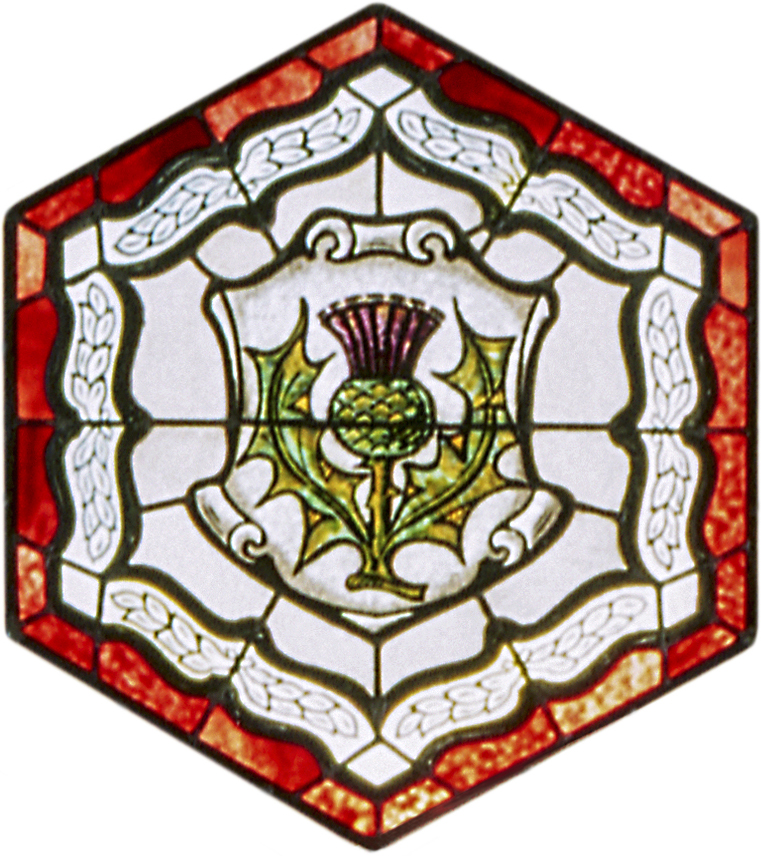
Thistle
The legend behind how the prickly purple thistle that carpets the Highlands became Scotland’s emblem goes back to a winner-take-all battle in the Middle Ages.
From the 8th to 13th centuries, Scotland’s north remained part of the Viking Kingdom of Norway. In the 1200s, the ambitious Scottish king, Alexander III, began to draw these territories under the banner of Scotland. Norway’s King Haakon retaliated by launching an invasion fleet in 1263.
The Norsemen planned a surprise late-night attack on the Scottish force at Largs, near Glasgow. The Norsemen took off their boots, the story goes, and crept silently under cover of darkness. One of Haakon’s barefoot warriors trod on a thistle and cursed aloud. The clansmen awoke and fell on the attackers, wiping out the Norwegian threat once and for all.
Whether this story is true or not, the thistle was well established as Scotland’s national emblem by the 15th century. King James III issued coins bearing the thistle in 1470. His grandson, James V, instituted the Order of the Thistle, Scotland’s version of England’s Order of the Garter, in 1540. His daughter, Mary Queen of Scots, incorporated the thistle into the Great Seal of Scotland.
The thistle appears in a few places in Centre Block, notably in the spectacular stained-glass ceiling of the Senate foyer, where it represents the contribution early Scottish immigrants made to Canada.
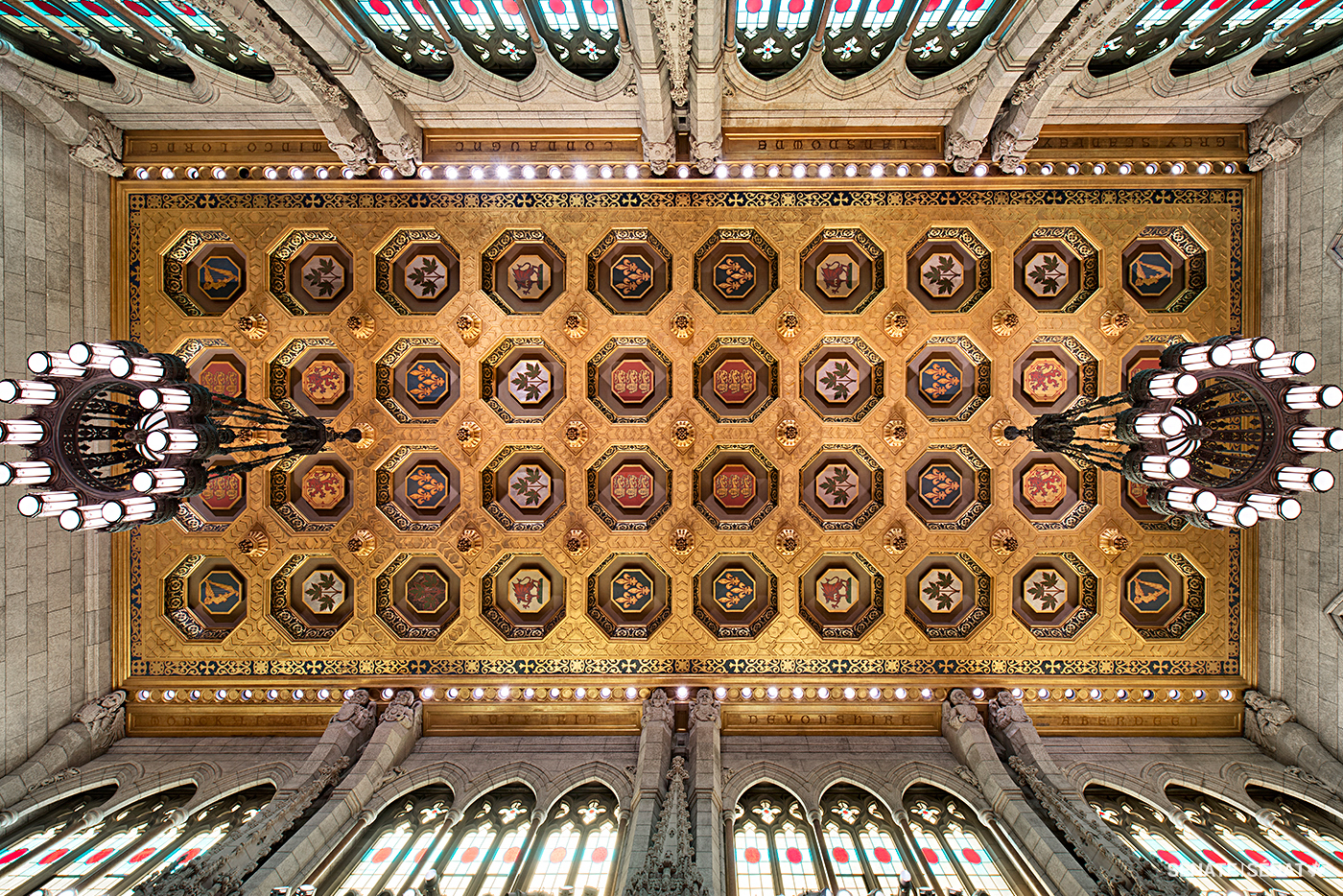 The gilded coffered ceiling in Centre Block’s Senate Chamber features several symbols associated with royalty, including the fleur-de-lis.
The gilded coffered ceiling in Centre Block’s Senate Chamber features several symbols associated with royalty, including the fleur-de-lis.
